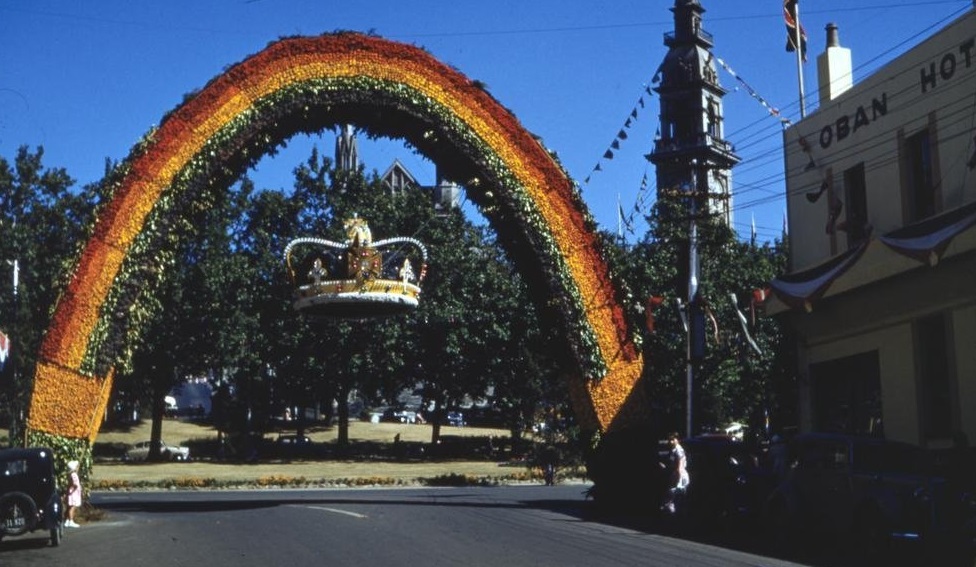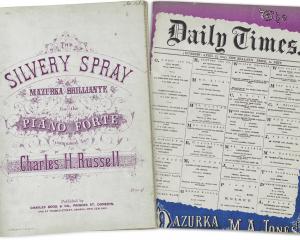
Dunedin has always been festive, writes Ceri Austin-Hart.
Celebrations, competitions, fetes, games and festivals have been an integral part of community building and life in Aotearoa New Zealand and Ōtepoti Dunedin for more than 150 years.
The sense of pride, progress and achievement embedded in these local celebrations of community spirit and might, as sociologist Eviatar Zerubravel aptly notes, is a powerful force in community formation.

One such festival that held top billing on the Dunedin calendar for decades was the Dunedin Festival, first launched after a highly successful week commemorating the visit of the newly crowned Queen Elizabeth II in January 1954.
Just a year later, the first official Dunedin Festival was opened on January 29, 1955, with much fanfare, including the release of 250 racing pigeons, an aeronautical display and the visit of two naval ships, the HMNZS Black Prince and the HMNZS Hawea.
As Dunedin mayor Sir Leonard Morton Wright remarked at the opening, the festival was the perfect event to ‘‘bridge the flat period between the Christmas holidays and the start of the working year’’. Throughout its life it continued to be held in the last week of January, to celebrate the city and lure visitors by the thousands to the deep South.

As reflected in the variety of items related to the Dunedin Festival held here at the Hocken, the week was jam-packed with a wide range of events, from tug-o-wars to organ concerts, art exhibitions to athletic meets, masquerade balls to soapbox derbies, aquacades to open-air plays, home shows to highland dancing. The eclectic and extensive list goes on, with the highlights often being the procession of floats, the high-speed road races and the crowning of Dunedin’s ‘‘Queen for a week’’.

Held on the Tuesday of festival week, the procession of floats would draw crowds to the streets of Dunedin by the thousands, to view the culmination of hundreds of hours’ worth of work. Local schools and business groups, societies and clubs, suburbs and boroughs, all jostled for civic supremacy while showcasing festive-float flavour. We have numerous procession photographs here at Hocken, it was hard to pick just a few for this piece. (You can view many more from the comfort of your couch on Hocken Digital Collections).
The Robert Burns float was the winning entry from the first procession in 1955, painstakingly created by the staff of the Dunedin City Council’s reserves department. Countless hours were spent laboriously placing flowers on an anatomic frame that moved side to side and ‘‘spoke in Scottish’’ in homage to the iconic and beloved Baird who, in statue form, overlooks the Octagon.

The delightful ‘‘Sunny Opoho’’ float from 1957 features children from Ōpoho School dressed up as sunflowers. As noted in the festival’s silver jubilee publication from 1979, Festival Time: 25 years of Dunedin festivals in review, Ōpoho reigned supreme in the best suburban float category, winning the ‘‘champions’’ award nine times during this period.
The road race was another favourite of the festival-going crowd. Although the ‘‘round-the-wharf’’ race began in 1953, it was integrated into the Dunedin Festival week programme of events from 1955. In 1959 the wharf circuit was replaced with the ‘‘round-the-house’’ race, a street circuit based in the Caversham area, with cars whipping past the Southern Cemetery, completing the circuit back at Andersons Bay Road.
Although highly popular with spectators and world-class drivers, such as Bruce McLaren, Chris Amon and Jack Brabham (to name a few), the street race wasn’t without drama or controversy. Three years after the accidental death of racing driver John Mansell, the last race was run in 1965, the event unable to recover from rising fuel prices, financial and safety concerns.

Again, Hocken holds many images of festival queens and princesses, including this fantastic one from 1961 (with bonus robot) and another, depicting the 1969 queen, Barbara Tubull, and her two princesses Valerie Nicholson and Gail Waldron, accompanied by an enthusiastic crowd of onlookers.
Although the Dunedin Festival is no longer part of the Ōtepoti calendar, the roots of community spirit and civic celebration sown have continued to grow and blossom. Now a diverse range of festivals are held over the year, such as the Midwinter Carnival, Beerfest, Chinese New Year, the Readers & Writers Festival, Puaka Matariki and The Moana Nui Festival, bringing the community together to celebrate who we are in different ways.
I do wonder, however, if the Dunedin Festival was to return, which suburb would reign supreme? And am I too old to be queen for a week?
• Ceri Austin-Hart is senior collections assistant at Hocken Collections Uare Taoka o Hākena



![‘‘Neil’s Dandelion Coffee’’. [1910s-1930s?]. EPH-0179-HD-A/167, EPHEMERA COLLECTION, HOCKEN...](https://www.odt.co.nz/sites/default/files/styles/odt_landscape_small_related_stories/public/slideshow/node-3436487/2025/09/neils_dandelion_coffee.jpg?itok=fL42xLQ3)








